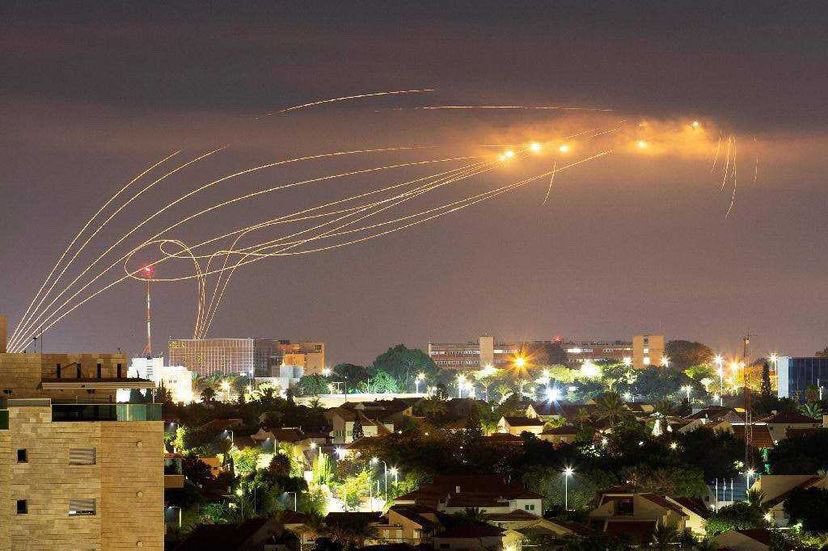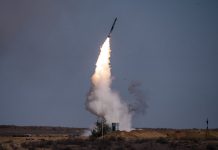Israel’s reluctance to transfer its state-of-the-art Iron Dome air defense system to Ukraine, despite frequent appeals from US lawmakers and Ukrainian officials, could be attributed to Iran’s ability to reverse engineer advanced weapons effectively.
‘Performs Like A Fighter’! Boeing-SAAB T-7A Red Hawk Aircraft Takes Maiden Flight; Could Emerge As A Big Competitor To China’s JF-17
In a recent interview with The Wall Street Journal published on June 27, the Israeli Prime Minister addressed this concern and stated that Israel would not provide Kyiv the Iron Dome air defense system or any other weaponry.
Israeli Prime Minister Benjamin Netanyahu elaborated on the rationale behind this decision, saying that their weapon systems could potentially end up in Iran’s possession.
“I think it’s important to understand that we are also concerned with the possibility that systems that we would give to Ukraine would fall into Iranian hands,” he said.
Netanyahu highlighted the alarming prospect that Tehran could potentially employ Israeli weapons against Israel itself.

Netanyahu drew attention to the fact that Israel is a densely populated country, and its ability to minimize casualties in previous conflicts was primarily attributed to the remarkable effectiveness of the Iron Dome system, which successfully intercepted 95% of missiles aimed at population centers.
Expanding on the implications, he stressed that if the Iron Dome system were to end up in Iran’s hands, millions of Israelis would be left defenseless and exposed to grave danger.
The statements by the Israeli PM are undoubtedly well-founded, given the well-established track record of Iran’s domestic defense industry in reverse-engineering foreign weapons.
In fact, various occurrences in the ongoing war have come to light, offering substantial evidence of Iranian firms actively involved in reverse engineering foreign weapons.
For instance, Iran’s Shahed-136 drones, supplied to Russia, are powered by German engines that Tehran illegally obtained almost two decades ago.
The concerns were further amplified in March when reports surfaced that Russia is supplying Iran with specific US-made weapons and equipment that were seized in Ukraine. These systems were purportedly given to Iran to conduct technical analysis and replication.
Iran’s Track Record In Replicating Weapons
The Defense Industries Organization (DIO), an indigenous arms manufacturer in Iran, plays a significant role in producing diverse military hardware for the country.
As a state-owned entity, DIO has been involved in reverse-engineering a considerable amount of equipment to meet the needs of the Iranian military.
Established in 1981, the Defense Industries Organization played a vital role in the reorganization and growth of Iran’s defense industry after the revolution. The DIO oversees numerous state-owned defense contractors and front companies directly or through its primary subsidiary, the Aerospace Industries Organization.
Over the years, several companies under the DIO have showcased their proficiency in studying and reproducing foreign weapon systems, encompassing technologies from countries such as the United States, the Soviet Union, and China.
One successful project of the DIO is the Raad 2, a self-propelled howitzer produced domestically in Iran. This weapon system combines an American-designed turret with a Soviet-designed hull.
The Raad 2 features an originally American-designed turret derived from the M109A1 self-propelled howitzer, along with a Soviet-designed hull that resembles the Iranian Boragh—a reproduction of the 1960s-era Soviet BMP-1 amphibious armored personnel carrier.
Similarly, the country’s domestically developed missiles have faced scrutiny and allegations regarding the potential unlicensed duplication of technologies originally employed in missiles developed by the United States, North Korea, China, and the USSR.
The Sayyad-1 missile is an upgraded Iranian version of the Chinese HQ-2 SAM, featuring advancements in guidance and control subsystems. It has a 200-kilogram warhead and a speed of approximately 1,200 meters per second.
The Sayyad-2 and its successor missiles are reverse-engineered versions of the RIM-66 Standard Missile (SM-1) obtained from the United States before the 1979 revolution.

Furthermore, the industry has demonstrated its ability to adapt and improve upon foreign designs. Iranian-made Saegheh fighter jet, based on the American F-5 Tiger II, demonstrates the country’s ability to equip indigenous aircraft with modern avionics, radar, and weapons.
That being said, such efforts have mainly benefited the drone sector. One of the most notable instances of Iran’s reverse engineering expertise is its replication of the RQ-170 Sentinel stealth spy drone.
In December 2011, Iran announced that it had captured a US RQ-170 Sentinel drone that had reportedly entered Iranian airspace. Instead of returning the drone, Iran opted to analyze and study the advanced technology embedded within it.
Iranian engineers successfully deciphered the drone’s design and technology. The country subsequently unveiled its indigenous version of the stealth drone, known as the “Saegheh.” The drone has many similarities to the RQ-170 Sentinel.

In addition to UAVs, cruise missiles, and fighter aircraft, Tehran has also advanced submarine technology. Based on North Korea’s Yono-class submarines, the Ghadir-class submarines demonstrate Iran’s expertise in local innovation.
These small submarines are good at coastal defense, bolstering Iran’s naval capabilities and presenting a substantial threat to enemy countries in the Persian Gulf. Therefore, Iran’s diverse range of weapons developed is a testament to its ability to replicate technologies from other countries.
Is it the Iran factor, the Russia factor (as Israel has been resistant to sending its weaponry to Ukraine for fear of antagonizing Moscow), or both that Prime Minister Netanyahu rejecting send Iron Dome to Kyiv?
- Contact the author at ashishmichel(at)gmail.)com
- Follow EurAsian Times on Google News




